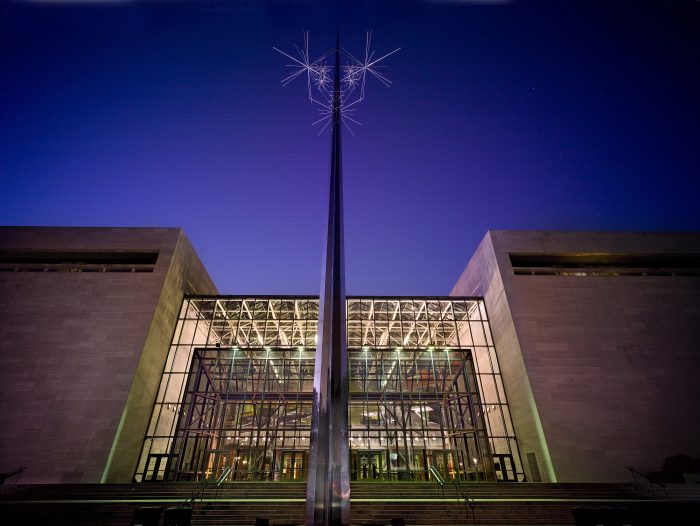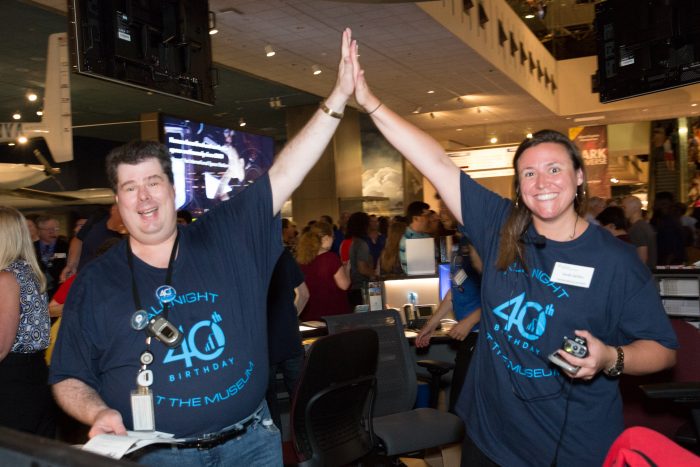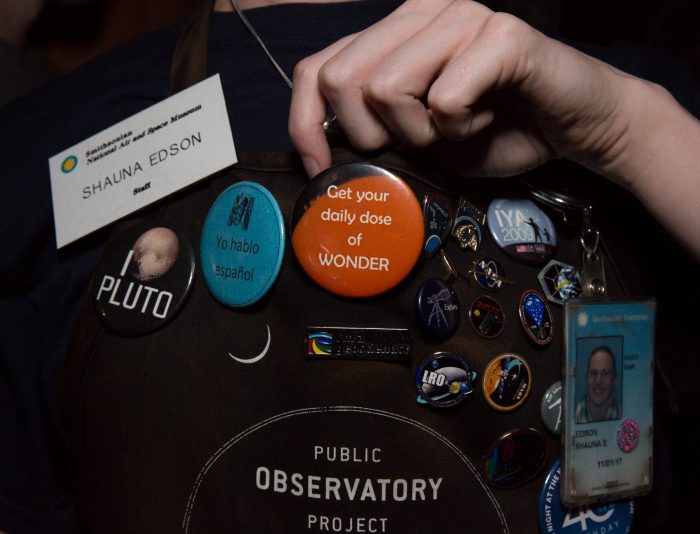All Night at the Museum
Max Kibblewhite spent all night at the Air and Space Museum to celebrate the 40th anniversary of the iconic building and lived to tell about it. Here’s the report:
When the National Air and Space Museum flagship building opened amid great fanfare during the country’s bicentennial year on July 1, 1976, it was immediately obvious that the iconic building was a hit. Just six months later, more than 5 million visitors had passed through its doors.
Forty years later, Air and Space is one of the most visited museums in the world. To celebrate the anniversary, the museum hosted “All Night at the Museum,” a celebration featuring the reopening of the Boeing Milestones of Flight Hall, the Air and Space Museum’s central gallery space. The hall’s renovation, which began in 2014, introduces the first new interpretation and digital experience to the museum since its debut. Some of the night’s special activities included a film festival, tours, demonstrations, music by the Air Force Band and special giveaways.

Panoramic view of the renovated Boeing Milestones of Flight Hall at the National Air and Space Museum. (Photo by Max Kibblewhite)
The renovated Milestones of Flight presents a new layout for some of its original displays, including the Friendship 7 Mercury capsule that John Glenn flew in 1962 and Gemini 4 spacecraft that supported the first American spacewalk. It also incorporates new exhibits, including an Apollo Lunar Module and the filming model for Star Trek’s Enterprise.
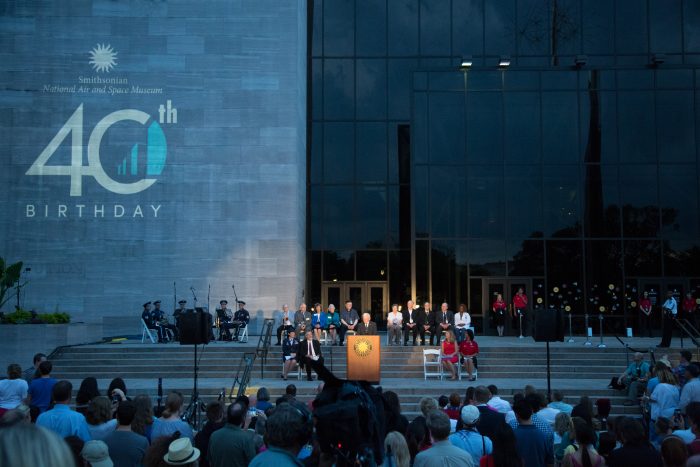
Director Jack Dailey welcomes visitors to the 40th birthday celebration of the National Air and Space Museum building. (Photo by Laura Turner)
To kick off the evening’s celebration, Air and Space Director Gen. J. R. (Jack) Dailey reminded the assembled crowd of the museum’s mission: to inspire the future by looking at the past. Nicole Malachowski, the first female pilot to fly with the U.S. Air Force’s famed Thunderbirds, explained how she was living proof of that mission, having first been inspired to fly as a 12-year-old girl wandering awestruck through the museum’s galleries. She directed her remarks to the many young people in the audience, encouraging them to seek their own inspiration throughout the evening.
After a countdown led by NASA and the crew on-board the International Space Station, the doors to the museum were flung open to welcome a new generation of visitors. Staff and blue-vested volunteers were standing by, handing out maps, directions, giveaways and smiles.
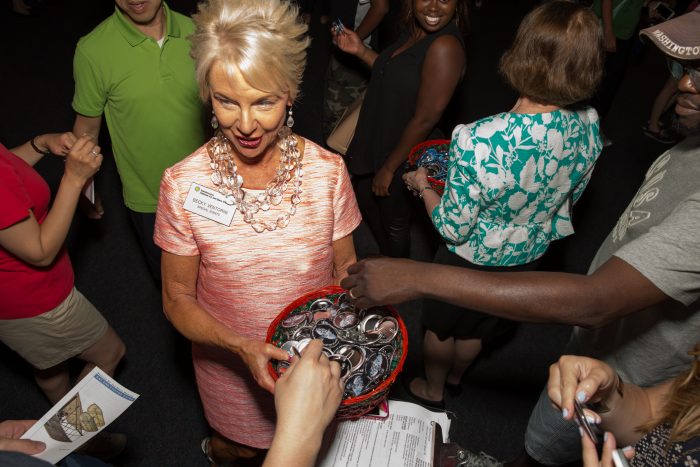
Becky Ventorini of Special Events and Karen DeThomas of Communications (with back to camera) distribute baskets full of commemorative buttons, each featuring a different artifact from the Boeing Milestones of Flight Hall. All 9,000 buttons were gone by 1:00 am. (Photo by Laura Turner)
The Media Wall, with its 21 gleaming touch screens, ushers the museum into the 21st Century. The largest of its kind in the world, the wall allows visitors to plan their own itinerary. The wall can also sync with the user’s phone and the Air and Space Museum’s latest app, GoFlight, for a more intimate and in-palm experience.
The new Welcome desk was a calm center amidst the crowds of excited visitors. Finished just in time for the reopening of Milestones of Flight, the desk provides 360 degrees of services for visitors.
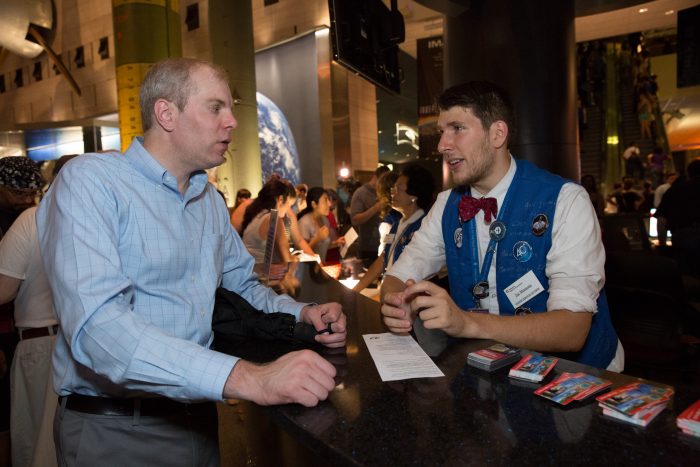
Zac Mennona (right) was among the Visitor’s Services volunteers manning the desk throughout the evening, troubleshooting and making the evening run almost seamlessly. (Photo by Laura Turner)
As soon as the muggy July skies cleared, ebullient educator Shauna Edson was ready for action at the Phoebe Waterman Haas Public Observatory. “I have a personal motto: ‘Get your daily dose of wonder,’” she said. “I get to incite wonder in kids and adults every day here at Air and Space. Right now, we’re looking at Saturn, and you can actually see its rings!”
Several curators and docents volunteered to give tours throughout the evening, weaving through the crowds and leading with glow sticks in hand.
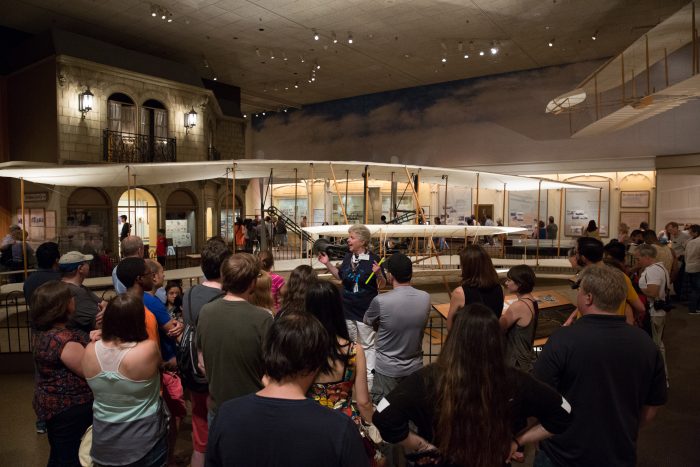
Docent Elizabeth Nesbitt discusses the 1903 Wright Flyer and its mechanics of flight. (Photo by Laura Turner)
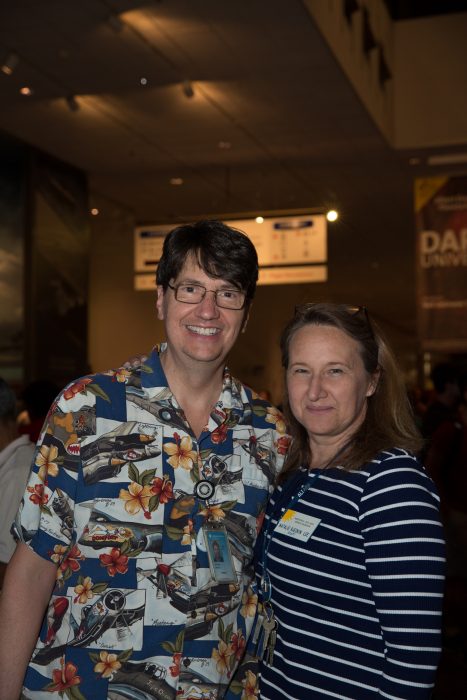
NASM A/V Specialist David Adcock sporting some festive attire for the evening, chats with Museum Registration Specialist Natalie Rjenkin-Lee. (Photo by Laura Turner)
Curators David DeVorkin and Layne Karafantis joined writer and actor Kevin Murphy from Mystery Science Theater 3000 and Bad Astronomy blogger Phil Plait for live commentary on Destination Moon (1950). Laughter began in the theater before the opening credits had concluded. DeVorkin, who saw the film when he was 7 years old during its first run in theaters, quipped, ”It’s still just as bad as I remember.”
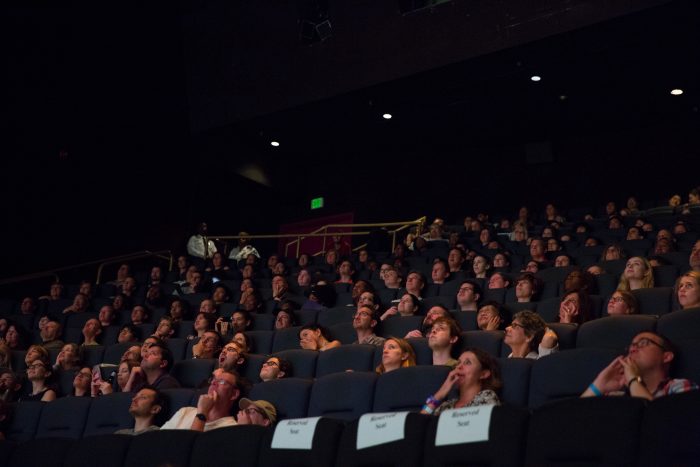
The audience is rapt (or possibly stunned) as they watch the science fiction classic, “Destination Moon.” (Photo by Laura Turner)
As Friday rolled into Saturday, volunteers at the Welcome Desk distributed clues for the Scavenger Hunt. Flocks of players scoured the Museum’s artifacts and panels for clues. Do you know the color of the Martian sky in the first photo taken by the Viking Lander?*
Participants in a special Air and Space version of the well-known game show, “Family Feud,” learned that what is common knowledge to an astronomer may not be all that common to anyone else. When asked to “Name a Famous Astronomer, one contestant exclaimed, “Tycho Brahe!” When the audience reacted with blank confusion, Space History Curator Paul Ceruzzi explained helpfully, “Brahe was one of the last astronomers to make all his observations with the naked eye. He also is known for his bronze prosthetic nose.”
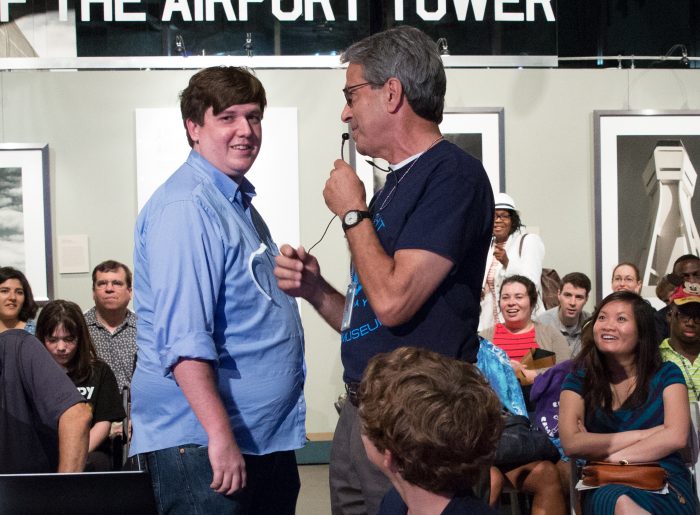
Paul Ceruzzi explains an answer during the Air and Space version of “Family Feud.” (Photo by Laura Turner)
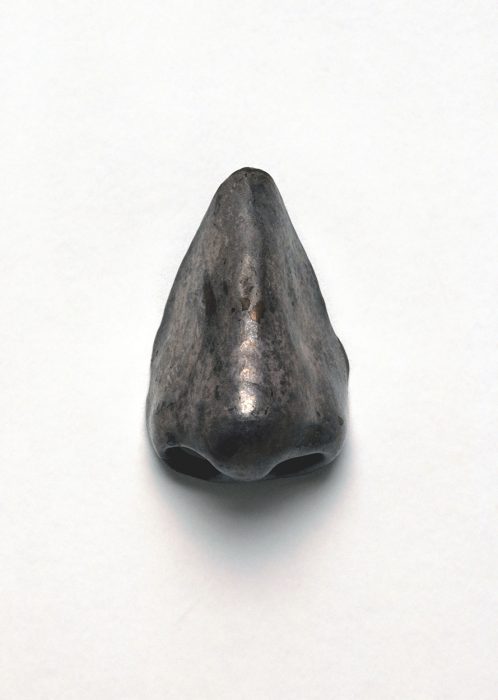
On December 29, 1566, while studying at the University of Rostock in Germany, Tycho lost part of his nose in a sword duel. For the rest of his life he wore a prosthetic nose, kept in place with paste or glue. This is not Brahe’s actual nose, but it is cool, nonetheless.
More than 54,000 people attended all or part of the nightlong festivities—a party 40 years in the making. We can’t wait until the next one!
*The color of the sky in the first photo of the surface of Mars taken by the Viking Lander in 1976 was salmon.
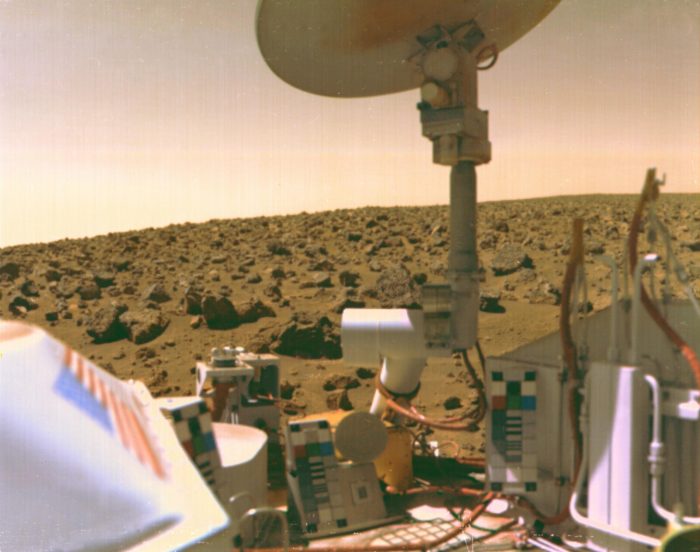
A boulder-strewn field of red rocks stretches across the horizon in this self-portrait of Viking 2 on Mars’ Utopian Plain. Fine particles of red dust have settled on spacecraft’s surfaces. The same dust is responsible for Mars’ salmon-colored sky as the particles hang, suspended in the atmosphere. (Image via NASA)
Posted: 11 July 2016
